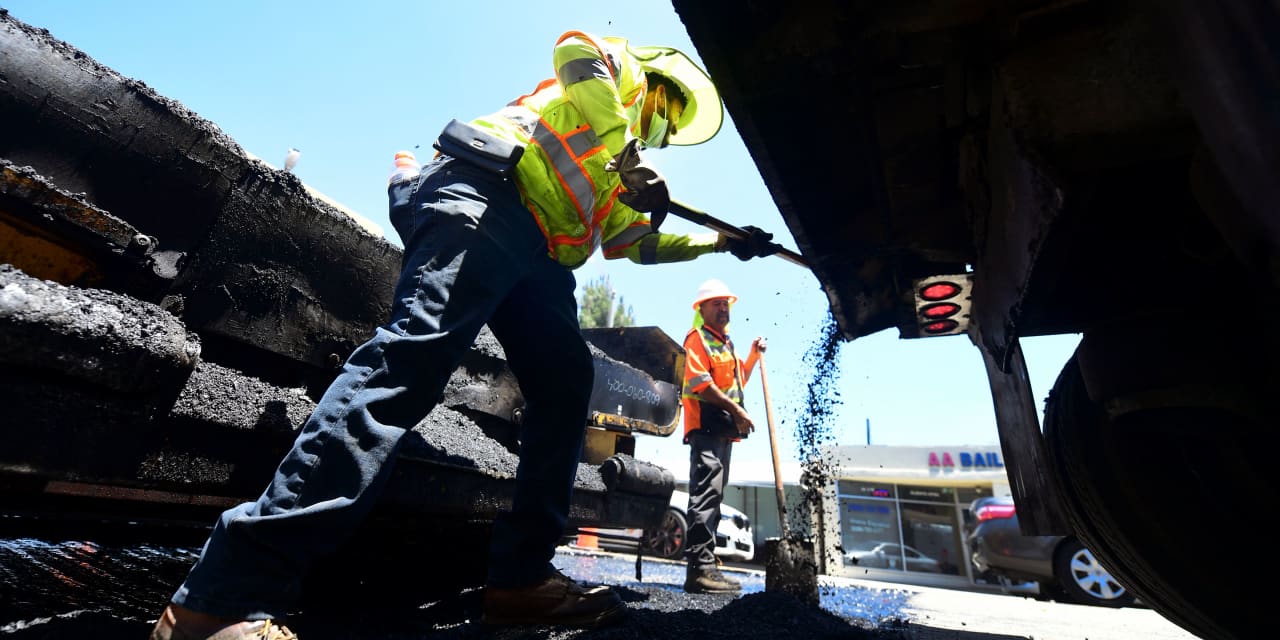Ah, the mysterious U.S. economy. Is it heading for a soft landing, no landing, or a resounding splat? Your guess is as good as ours. But no matter the outcome, investors should feel confident that the construction sector will not just survive, but thrive.
Yes, even through a recession. There are several forces at work that should keep the cyclical industry booming in 2024 even if broader economic activity slumps. One is the lengthy march toward a lower-carbon energy system. Another is the movement by companies to bring manufacturing back to the U.S. from abroad after spending decades sending it overseas. And demand for energy-intensive artificial intelligence means more and larger data centers are needed.
Better yet, a trio of U.S. government programs—the Infrastructure Investment and Jobs Act, the Chips Act, and the Inflation Reduction Act—will help keep the money flowing, come economic rain or shine. Together, the three represent hundreds of billions of dollars in spending and subsidies targeted at upgrading the nation’s roads and bridges, expanding domestic manufacturing of semiconductors, and modernizing the electrical grid, among many other things.
“The massive spending on government programs will blunt the downturn compared with an average cycle,” says Graeme Forster, portfolio manager of the Orbis Global Equity Strategy.
That’s no secret, and many of the obvious beneficiaries have already seen their stocks surge in anticipation. Those include the construction and engineering contractors who will be doing a lot of the planning and construction work for the plethora of projects coming up.
Take
Sterling Infrastructure
(STRL), a 2023 Barron’s Roundtable pick in January when shares were around $32. The stock has climbed 126% this year, to a recent $74.
Quanta Services
(PWR), the 800-pound gorilla in the space, is up 33% this year and trades for 27 times forward earnings, versus its five-year average of around 16.5 times. Chasing these infrastructure and electrification winners now seems tough, and there may be a better entry point should markets pull back.
Some, though, might be worth considering despite big gains. Daniel Skubiz, a portfolio manager at Ziegler Capital Management, points to
MYR Group
(MYRG), which sits in the sweet spot for the investments that the U.S. government, utilities, and companies are making—recession or not. The stock, up 47% year to date, has been no slouch, and shares trade at a premium multiple of 21 times forward earnings. But that’s well deserved for the builder of large-scale electrical infrastructure, including transmission and distribution power lines, substations, and for a variety of commercial and industrial applications.
“They’re involved in grid hardening, integration of renewables into the grid, and a lot of specialized electrical work for data centers, healthcare, manufacturing, and more,” Skubiz says.
Other stocks in the group appear cheaper, and many are small-caps, which as a group have had a tough 2023.
Fluor
(FLR) gets more than 40% of its revenue from its oil-and-gas construction segment. Management is working to diversify away from that field, and the company is bidding on contracts for U.S.-based semiconductor manufacturing that should receive Chips Act funding.
Fluor also has transportation infrastructure credentials: Current projects include the Gordie Howe International Bridge connecting Detroit and Windsor, Ont., plus the new LAX Automated People Mover. The stock has gained less than 6% this year and trades for 14 times forward earnings, a discount to its five-year average of 18 times.
MasTec
(MTZ) and
Aecom
(ACM) are other construction and engineering companies that have sat out the group’s 2023 rally and are trading at reasonable valuations.
They’re worth a look even if there’s a recession.
Write to Nicholas Jasinski at nicholas.jasinski@barrons.com
Read the full article here













Leave a Reply